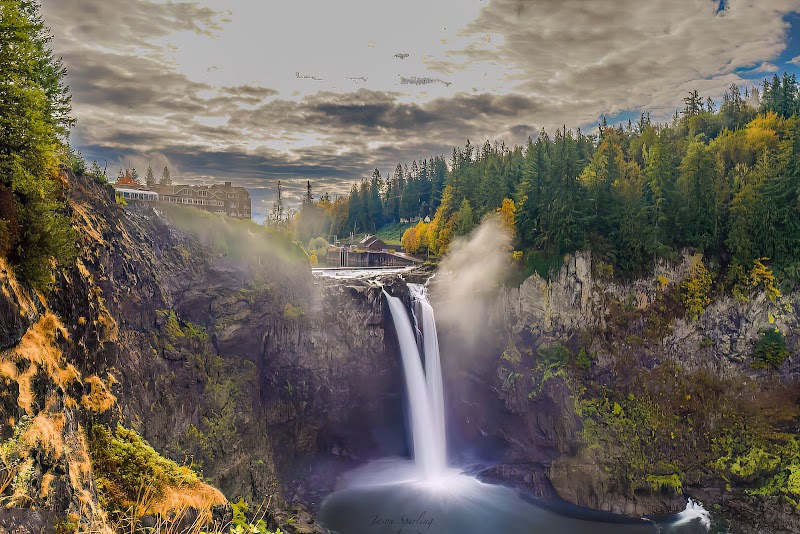
Show Me Seattle: Your Ultimate Hub for Outdoor Adventure Around the Emerald City
Show Me Seattle stands as the premier hub for outdoor activities near the Emerald City, offering trails and waterways that suit adventurers of every level. With clear routes, scenic views, and a dynamic natural presence, it’s the practical starting point for anyone eager to experience the Pacific Northwest outdoors.
Adventure Tips
Start Early for Best Trail Conditions
Morning hikes often feature cooler temperatures, less crowded paths, and clearer views before the afternoon haze or rain rolls in.
Carry At Least Two Liters of Water
Hydration supports your endurance and focus, especially on climbs or longer routes typical around Show Me Seattle.
Wear Trail Shoes with Good Traction
Expect varied terrain including loose gravel, roots, and slippery moss in shaded spots—it’s essential to protect your ankles and maintain stability.
Download Offline Maps Before Heading Out
Cell service dips in forested or mountainous sections, so ensure you have navigation backups to avoid disorientation.
Show Me Seattle: Your Ultimate Hub for Outdoor Adventure Around the Emerald City
Seattle is more than just a vibrant cityscape; it serves as a gateway to a range of outdoor activities that challenge and inspire. Show Me Seattle has earned its reputation as the go-to destination for outdoor enthusiasts, blending accessible urban wilderness with rugged terrain that appeals to casual hikers and seasoned adventurers alike.
The area's trails range from gentle forest strolls to steep climbs. Take, for example, the Rattlesnake Ledge Trail. This 4-mile round trip hike includes a steady 1,160-foot elevation gain, pushing you upward along a dirt path that winds through fir and cedar trees. The ledge itself offers a commanding 270-degree view of Rattlesnake Lake and the surrounding Cascade foothills. The trail is firm underfoot, occasionally edged with rocks and roots that keep you alert but don’t demand technical skills.
Prepare to engage with the landscape on its own terms—where the river’s currents insist you respect their flow, and the trees lean as if whispering the forest’s secrets as you pass. Show Me Seattle’s outdoor activities invite you to move with intention and awareness.
For those planning their trip, timing your adventure is key. Early mornings bring calm winds and quiet trails, while afternoon visits offer sunlight filtering through the canopy, casting shifting patterns along the path. Wear sturdy, moisture-wicking shoes with good tread to handle mixed terrain—from rocky inclines to muddy patches after rain. Hydration is crucial here; carry at least two liters of water and consider a hydration pack for longer outings. Layer your clothing to adjust easily to Seattle’s changeable weather.
Local guides emphasize safety and respect for nature's forces. You’ll find clear signage on trails at Show Me Seattle, but cell service can wane as you climb higher. Download maps offline beforehand. The diverse terrain means you may encounter wet conditions, especially in spring or fall, so waterproof gear is recommended.
Show Me Seattle also caters to varied interests beyond hiking. Kayaking on Lake Washington lets the water tease your balance, pushing you gently along shoreline views framed by city silhouettes. Mountain biking trails nearby offer technical challenges with tight switchbacks and root-jammed descents.
No matter the activity, this area demands a balanced approach: excitement to explore paired with preparation and respect. When you engage with Show Me Seattle, you’re not conquering the landscape but participating in an ongoing dialogue with a place fiercely itself.
Nearby Trips
All Adventures
Boat Charters
Water Activities
Adventures near Seattle, Washington
Discover the unique and memorable adventures that make Seattle, Washington special.
Frequently Asked Questions
Are dogs allowed on the trails around Show Me Seattle?
Yes, many trails welcome dogs but require them to be on a leash to protect wildlife and other hikers. Check trail-specific rules since some conservation areas may restrict pets.
What wildlife might I encounter in this area?
Expect to see black-tailed deer, bald eagles, and occasionally river otters near water bodies. Keep an eye out for salmon during fall spawning runs in local streams.
Is parking readily available at popular trailheads?
Parking exists but can fill quickly during weekends and peak seasons. Arriving early or using alternative transport options like ride-shares or shuttles can ease access.
Can I find restroom facilities near hiking spots?
Most popular outdoor areas provide pit toilets or vault facilities, but more remote spots lack amenities, so plan accordingly.
Are there guided tours or group hikes offered?
Several local outfitters offer guided hikes and kayaking tours, providing expert knowledge and gear, which is great for newcomers or those seeking a structured adventure.
What cultural significance does the land hold?
This region lies within the traditional territory of the Coast Salish peoples, whose stewardship and stories are integral to the landscape’s identity.
Recommended Gear
Trail Running Shoes or Hiking Boots
Secure footing and ankle support are necessary for the mixed terrains and occasional rocky patches.
Hydration Pack
Carrying water hands-free helps ensure you stay hydrated on longer or warmer hikes.
Waterproof Jacket
Spring showers can be sudden; a breathable waterproof shell keeps you dry and comfortable.
Headlamp or Flashlight
With shorter daylight, it’s wise to have a reliable light source if you hike late in the day.
Local Insights
Hidden Gems
- "Continuous Trail Loop near Twin Falls offers a less-traveled path with secluded waterfall views."
- "Taylor Mountain Ridge for panoramic post-card worthy vistas often overlooked by busy crowds."
Wildlife
- "Banana slugs, common on moist forest floors, highlight the forest’s humidity and ecosystem health."
- "Purple martins and pileated woodpeckers are vibrant bird species adding lively presence."
History
"Show Me Seattle trails run through areas historically used by both indigenous communities and early settlers, with remnants of logging routes marking the terrain."
